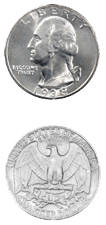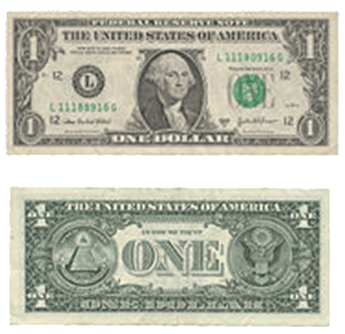Counting Money
This is a penny and it is worth $.01 (one cent). When counting pennies you count by ones. This is the front and back view of a penny.

This is a nickel and it is worth $.05 (five cents). When counting nickels you count by fives or add five cents. This is the front and back view of a nickel.

This is a dime and it is worth $.10 (ten cents). When counting dimes you count by tens or add ten cents. This is the front and back view of a dime.

This a quarter and it is worth $.25 (twenty-five cents). When counting quarters you count by 25 or add 25 cents. This is the front and back view of a quarter.

This is a one dollar bill it is worth $1.00. When counting dollars you count by ones. This is the front and back view of a one dollar bill.

This is a five dollar bill it is worth $5.00. You count these by fives. This is the front and back view of a five dollar bill.

Example:
Count the money shown:

$1.00 + $1.00 + $1.00 + $.025 + $0.25 + $.10 + $.01 + $.01 + $.01 = $3.63


